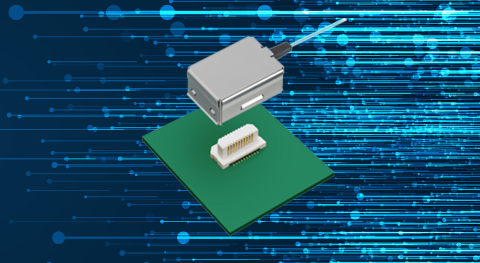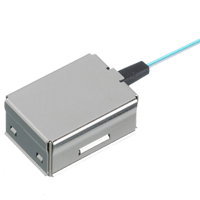V Series (LC Connector type)
The V Series LC Connector Type Active Optical Connectors include a Duplex-LC Connector, a Plug-To-LC Connector Type that can transmit a signal with a broad data rate from 20 Mbps to 8 Gbps for intra-device or inter-device connection—enhancing the existing Active Optical Connector offerings by providing the LC Connection to achieve long-distance transmission while maintaining high speeds, noise immunity, and electrical isolation characteristics.
These Active Optical Connectors are perfect for applications that require low power consumption. Unlike passive optical connectors, the V Series LC Connector Type does not need to be cleaned when inserted or removed. In addition, the lightweight and small footprint design reduces board space by 80% and contains a “V-Groove” to allow for passive alignment to improve signal integrity.
Features and Benefits of V Series LC Connector Type
- Duplex LC Connector Allows for Diversity of Connection Type
- High-Speed Transmission of 20 Mbps to 8 Gbps
- Low Power Consumption/Smaller Footprint Reduces Power Required and Space on Board
- Noise Immunity/Electrical Isolation Allows for Stronger Signal Fidelity and Device/Human Protection
Industries and Applications for V Series LC Connector Type
- Medical / Endoscopy, MRI
- Industrial Printing / Between Ink Jet Head and Control Board
- Machine Vision / Between Camera Head and Control Board
- Measurement / Between Detector and Processor
V Series (LC Connector type)
Part number list
Resources
New Product Information Download

Find the latest new product details here, with a convenient PDF product summary document. Quickly access and download the latest product information for the new V Series (LC Connector Type) Connectors, including product specifications, features, benefits, industries and applications, software, block diagrams, and technical characteristics.
Active Optical Connectors

The Ultimate Solution for Engineers Switching from Copper to Optical
Panasonic's AOC solves the problem of engineers considering shifting from copper to optical by offering a small device that combines high-speed transmission, noise resistance, electrical isolation, and long-distance transmission in a single unit. This significantly reduces circuit design effort and saves on weight while providing high speed with electrical immunity.
Playlist


